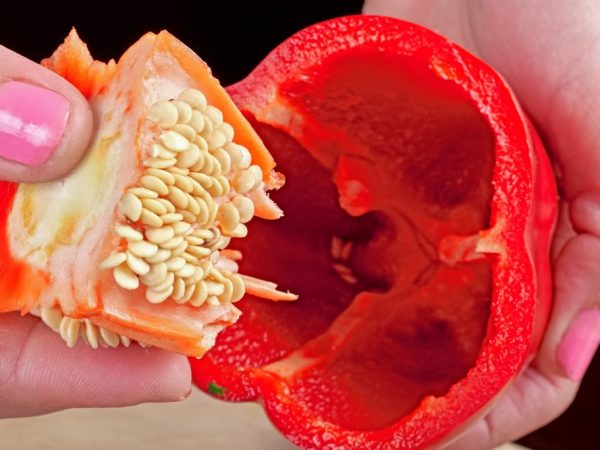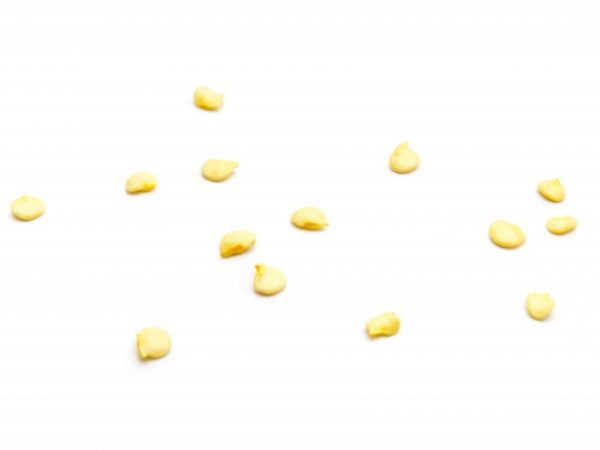Checking the germination of pepper seeds
The planted seeds do not always please with good shoots, it is not always possible to get the desired amount of seedlings. Checking the germination of pepper seeds is one of the stages of seed preparation. This procedure will help to reject low-quality grains.

Checking the germination of pepper seeds
What is germination
Seeds are characterized by the ability to germinate in a certain amount of time if provided with the appropriate conditions. The percentage of seeds planted to those that have sprouted is called germination. It cannot be one hundred percent, especially since pepper is a capricious culture.
Distinguish between laboratory and field germination. The first indicators are written on the packages, and they are always high - 95-98%. This is due to the fact that the laboratories have created ideal conditions for the germination of seed, which cannot be provided at home. Therefore, in such a microclimate, the indicators are always lower.
Sweet pepper seeds remain viable for 3-4 years. It is better to plant them in the first year after harvest, as the number of grains that can germinate decreases every year. Therefore, when buying seed, you need to pay attention to the date of issue. It is not worth buying it from the market, out of hand. It is better to give preference to a well-known manufacturer with a good reputation.
Seeds with a germination rate of 60% or more are on sale. For seed of the 1st class, the indicators should exceed 80%. It should also be taken into account that different varieties show different germination times. Therefore, you should familiarize yourself with the characteristics of the desired planting species.
Seed preparation for germination testing
First you need to select high-quality seed. Calibrate. Only large and medium grains are left. They contain a larger supply of nutrients, so they will produce strong and healthy plants. Seeds of approximately the same size will provide friendly shoots. This will make it easier to care for the seedlings.
Grains, stirring, are placed for 2 hours in such a solution:
- 30-50 g table salt;
- 1 liter of water.
Full-weight seeds will sink to the bottom. Hollow and small - will float. They are removed, such grains are not planted or germinated separately. The rest are removed, washed with clean water and dried.
Checking the germination of pepper seeds
The procedure is done in advance. Don't wait for the landing dates to come. Then there is not enough time to replace the seed if it turns out to be of poor quality. At the same time, they check the germination energy - how evenly the sprouts appear.
To test the seeds of pepper for germination, they are taken in 10 or 20 pieces. This will make it easier to calculate the percentage of seeds sown to germinated. Then evenly put on a bandage folded in several layers (gauze, toilet or filter paper), moisten. Cover from above in the same way. Placed in a plastic container with a lid, which is then regularly opened for ventilation.You can leave it on a saucer, but it will be more difficult to ensure that the fabric does not dry out. Melt water works well for moisturizing. It needs to be refilled periodically, but little by little.
The container is left warm (25 ° C). A few days later, when the grains hatch, their number is counted. Determine the percentage of germination. If its performance is low, you need to plant more grains. When they are below 30%, no such seed is used. The average germination rate of bell pepper seeds is 65-85%.
Factors influencing germination

Improper storage can ruin seeds
The number of germinated grains can decrease for various reasons:
- appropriate conditions are not provided - watering, ambient temperature, etc.;
- improper storage - you should not keep grain in a room with high humidity, it raises the temperature inside the seed, it can become sterile;
- immaturity and dryness;
- lack of a resting stage.
In order for the grains to germinate well, the crops must be provided with optimal conditions:
- Temperature. Air indices - 25-28˚С, earth - 20-25˚С. A board is laid under the box to prevent hypothermia of the earth.
- The soil must be breathable and permeable.
- Frequent but moderate watering. High-quality seed dies from excess moisture, since the soil does not pass oxygen to it well.
- Ventilation of the room.
Increased germination
For this purpose, bubbling, pelleting, and inlaying are carried out on an industrial scale. At home, preparatory processing of seeds is done.
Disinfection
So that the grains do not lose their sowing qualities, the procedure is carried out 2 days before planting. To do this, they are placed in a gauze bag and soaked for 20 minutes in 20% saline solution or 1-2% solution of potassium permanganate. Then they are removed, washed and dried. They also use purchased funds. The drug Fitosporin-M will help to overcome pathogenic bacteria. It is diluted in an amount of 4 drops in 1 glass of water.
Saturation with nutrients
The quality of the seed is improved with the help of growth stimulants. For this purpose, organic and chemical agents are used. Ash water is perfect (20 g of ash per 1 glass of water, insisted for 1 day), in which the grains are soaked for 5 hours. Also used drugs Epin, Zircon, Ivin, etc.
It is necessary to carefully monitor the time of performing the procedures, as well as the concentration of the solutions used. Its increase threatens with the opposite effect - the germination rate will decrease.
Warming up
The seeds will grow well if placed in warm water (40 ° C) for 6 hours. You can maintain the temperature at this level using a thermos. The procedure activates the growth processes inside the grains. After that, they are washed and dried.
Conclusion
Testing seeds for germination can save time for growing healthy seedlings. Strong seedlings that have grown on time are the key to a high-quality harvest. You can improve the quality of the seed using different processing methods. Then the seedlings will be friendly, and the number of plants will exceed expectations.


